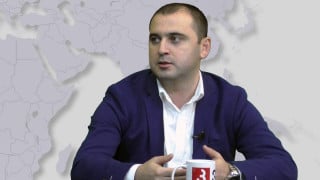Verdict: FactCheck concludes that Levan Khabeishvili’s statement is TRUE.
Resume: Statements about “unjustifiably high” utility tariffs and the possibility to decrease them significantly were indeed voiced during the 2012 election campaign. In accordance with the Legislative Herald’s data, consumer tariffs on electricity have increased by nearly GEL 0.04-0.05 instead of being halved from 2012 to the present day.
In the case of natural gas, consumer tariffs remained mostly unchanged until 2017 but the tariffs were subsidised by GEL 0.05 which technically does not count as a reduction of the consumer tariff. That subsidy ended in 2017. In the same year, the natural gas tariff increased for part of the population living outside Tbilisi because the Georgian National Energy and Water Supply Regulatory Commission (GNERC) set the single tariff for Socar Georgia Gas. The latter incorporates 41 former network operators and, therefore, different consumer tariffs were applied to different regions and cities prior to the GNERC’s decision. After its decision, Socar Georgia Gas customers had their tariffs increased in different proportions. For certain customers, the natural gas tariff increased by GEL 0.26. For the first time, a single tariff was set for the Sakorgaz company coverage area.
Analysis
United National Movement member, Levan Khabeishvili, stated: “In 2012, the Georgian Dream came to power with a promise to halve utility prices. However, the electricity tariff has increased instead of being halved.”
Statements about “unjustifiably high” utility tariffs and the possibility to decrease them significantly were indeed voiced during the 2012 election campaign. For instance, Bidzina Ivanishvili stated: “The utility prices that we have now in Georgia can be halved starting from tomorrow… Georgia has very cheap electricity, we have plenty of hydroelectric plants and they produce cheap energy. It is absurd to have natural gas prices similar to the tariffs in Europe. If we recalculate, they should be a third of the current price.”
Changes for customers in natural gas and electricity purchase tariffs are given in the respective decisions of the GNERC which are published in the Legislative Herald.
Table 1: Changes in Electricity Consumer Tariff in 2010-2017 (Tetri/Kwt hour excluding VAT)
|
Telasi |
2010 |
Dec 2012 |
Apr 2013 |
Sept 2015 |
Dec 2016 |
Dec 2017 |
|
0–101 kwt/hour |
11.424 |
8,424 |
11,424 |
11 |
11 |
12.325 |
|
101–301 kwt/hour |
13.56 |
10,56 |
13,56 |
14,4 |
14.4 |
15.725 |
|
301 kwt/hour and more |
14.998 |
14,998 |
14,998 |
18,200 |
18.2 |
19.525 |
|
Energo Pro |
2010 |
Dec 2012 |
Apr 2013 |
Aug 2014 |
Dec 2016 |
Dec 2017 |
|
0–101 kwt/hour |
11 |
8 |
7,63 |
7,63 |
10,978 |
12.065 |
|
101–301 kwt/hour |
14 |
11 |
11 |
11 |
14,348 |
15.435 |
|
301 kwt/hour and more |
14.83 |
14,83 |
14,83 |
14,83 |
18,178 |
19.265 |
Source: Georgia’s Legislative Herald
We see that as compared to 2012, electricity consumer prices have increased, let alone being halved. Of note is that several factors have affected the growth of electricity tariffs, including producer’s expenses, energy transportation costs and the GEL exchange rate. It is expected that electricity tariffs will increase in the future as well (see FactCheck’s research).
In regard to natural gas tariffs, natural gas delivery consumer tariffs are different in the cases of the three largest providers. In 2012-2017, the ceiling of consumer tariffs for KazTransGaz customers did not change. However, the tariff was reduced by GEL 0.05 from March 2013 at the expense of a subsidy which was largely a political decision. The price of natural gas was reduced as a result of a reduction of earnings of the Georgian Oil and Gas Corporation which cut the natural gas delivery price for distribution companies. In July 2017 the subsidy memoranda were revoked and that practice ended as well.
Table 2: Natural Gas Consumer Tariffs Excluding VAT in 2012-2018
|
|
Aug 2012 – Jul 2017 |
Jul 2017-2018 |
|
|
KazTransGaz |
High Pressure |
31.669 |
39,113 |
|
Moderate Pressure |
34.805 |
||
|
Low Pressure |
42.898 |
||
|
Socar |
|
48.254 |
|
|
Sakorgas |
48.314 |
||
Source: Georgia’s Legislative Herald
In July 2017, the natural gas tariff increased for people living outside Tbilisi because the GNERC set a single tariff for Socar Georgia Gas – GEL 0.4825 excluding VAT. The company incorporates 41 former network operators and, therefore, different consumer tariffs were used in different regions and cities prior to the GNERC’s decision. This means that Socar Georgia Gas customers had their tariffs increased in a different proportion. For certain customers, the natural gas tariff increased by GEL 0.26. For the first time, a single tariff has been set for Sakorgaz customers as well. Of note is that the state subsidy for natural gas tariffs does not count as a reduction of the consumer tariff.








